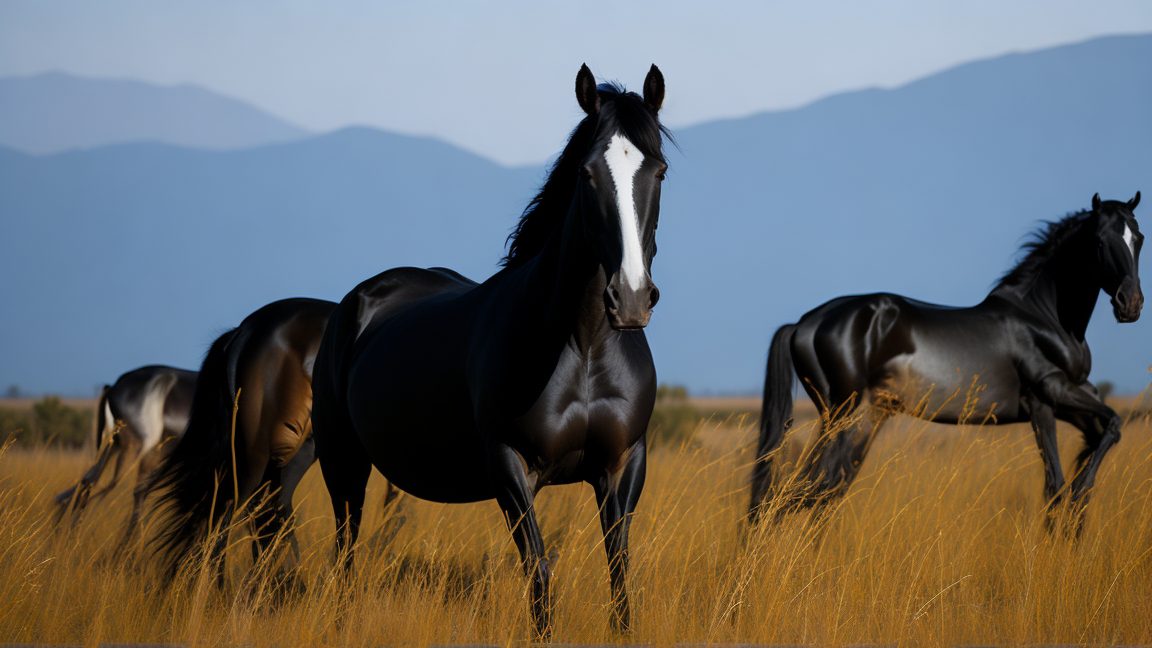Horses have been captivating creatures, admired for their grace, strength, and companionship. But have you ever wondered about the scientific name that identifies these magnificent beings? In this article, we embark on an enthralling journey to unravel the mysteries surrounding Equus caballus, the scientific name for the horse. Join us as we delve into the captivating world of horses, exploring the science behind their name, their evolutionary history, intricate anatomy, physiological marvels, and the profound connection they share with humans.
The Language of Science: Decoding Equus Caballus
The scientific name of the horse, Equus caballus, holds rich meaning and provides insights into their taxonomy and evolutionary lineage. Equus, derived from Latin, signifies “horse,” while caballus, also of Latin origin, represents “a workhorse or riding horse.” This nomenclature places horses within the genus Equus and the broader family Equidae, which includes other equines like zebras and donkeys.
Tracing the Evolutionary Path: Unraveling Equine Ancestry
Prehistoric Horses and their Ancient Ancestors:
Before the emergence of Equus caballus, horses underwent a remarkable evolutionary journey spanning millions of years. Fossil evidence reveals the existence of prehistoric ancestors, such as the Eohippus (also known as Hyracotherium), which were small, dog-sized mammals that lived around 55 million years ago. Over time, these early equids evolved into larger species, with adaptations to suit changing environmental conditions.
Significant discoveries, including fossil remains and genetic studies, have contributed to our understanding of horse evolution. Key ancestors include the Mesohippus, Merychippus, and Pliohippus, which exhibited gradual changes in body structure, dental adaptations, and limb modifications. These evolutionary developments culminated in the emergence of the modern-day Equus caballus.
The Horse’s Incredible Anatomy: Marvels of Equus Caballus
Understanding Equus Caballus’ Body Structure:
Equus caballus possesses a stunning array of anatomical adaptations, making them well-suited for their diverse roles and environments.
At the core of a horse’s physicality is its muscular system. With powerful hindquarters and a robust framework, horses exhibit remarkable speed, agility, and strength. Their long limbs and unique bone structure allow for efficient movement and provide a strong foundation for carrying weight.
The hooves of Equus caballus are a marvel of engineering. Composed of tough, keratinous material, hooves serve as protective coverings for the underlying structures. The structure and shape of the hoof enable shock absorption, stability, and traction, allowing horses to navigate various terrains with ease.
Unveiling the Secrets of Equine Physiology: Exploring Equus Caballus’ Inner Workings
Revealing Equine Physiology:
The physiology of Equus caballus exhibits fascinating adaptations to support their unique lifestyles and dietary needs.
A horse’s digestive system is designed for a herbivorous diet. They possess a large cecum and a complex fermentation process that aids in the breakdown of fibrous plant material. Unlike humans, horses cannot vomit, emphasizing the importance of proper nutrition and digestion.
Equus caballus also boasts an impressive cardiovascular system. Their heart, lungs, and blood vessels work together to deliver oxygen and nutrients to muscles during physical exertion. This remarkable efficiency contributes to their exceptional endurance and stamina.
The Horse-Human Connection: Celebrating Equus Caballus’ Impact
Domestication and Beyond:
Horses have played an integral role in human civilization for thousands of years. The domestication of Equus caballus revolutionized transportation, agriculture, and warfare, enabling the expansion of societies and facilitating cultural exchange.
Beyond their practical contributions, horses have also forged deep emotional connections with humans. Today, equestrian sports and recreational activities, such as horseback riding and show jumping, continue to captivate enthusiasts worldwide. Equine-assisted therapy programs harness the innate bond between humans and horses to provide emotional support and facilitate personal growth.
Conclusion:
Equus caballus represents more than just a scientific name for the horse; it serves as a gateway to a world of awe-inspiring scientific marvels and the enduring bond between humans and horses. By understanding the evolutionary journey, intricate anatomy, and physiological wonders of Equus caballus, we deepen our appreciation for these remarkable creatures. So, join us as we embark on an extraordinary exploration of the scientific landscape of the horse, where the beauty of nature and the wonders of science intertwine harmoniously.



